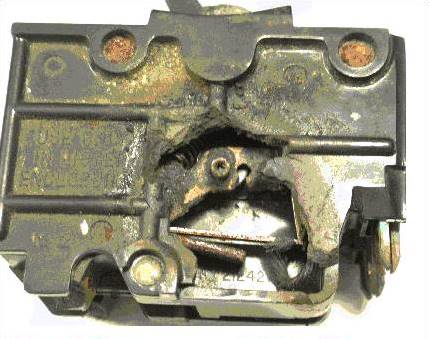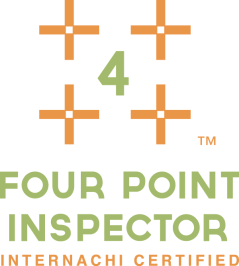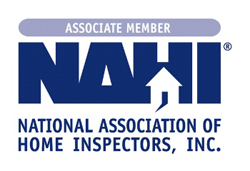Federal Pacific Stab-Lok breaker panels
FEDERAL PACIFIC ELECTRIC, FPE STAB LOK ® Electrical Panels & Circuit Breakers: Latent Fire & Shock Hazards
 |
FPE Stab-Lok® Equipment in Residential Properties: Hazards & Remedies
|
| https://inspectapedia.com/fpe/FPE_Stab_Lok_Hazards.php | |
InspectAPedia.com is an independent publisher of building, environmental, and forensic inspection, diagnosis, and repair information for the public – we have no business nor financial connection with any manufacturer or service provider discussed at our website.
What is The FPE Stab-Lok® Hazard
Federal Pacific Electric (FPE Stab-Lok® ®) was a widely-distributed electrical panel brand throughout the United States and under the Federal Pioneer brand, also in Canada very similar product continues to be sold. For years, anecdotes and field reports about FPE Stab-Lok® ® hazards and defects have been discussed at professional conferences and occasionally in the media. Field reports of recalls, poor and even fraudulent manufacturing & labeling, house fires,and injuries have been reported attributed to this product. Independent testing confirms that FPE Stab-Lok® ® circuit breakers fail to trip, at times as much as 70-80 percent of the time. We have found no data indicating that circuit breakers from other manufacturers fail at anywhere near this high rate. The equipment is a fire and injury hazard.
- Fraudulent FPE Stab-Lok® ®practice: In 2002, in a class action lawsuit in New Jersey, the Court ruled that over many years FPE had violated the NY Consumer Fraud Act. Specifically, the court found that “… FPE knowingly and purposefully distributed circuit breakers which were not tested to meet UL standards as indicated on their label. This constitutes an unlawful practice proscribed by the Act.“[1] The court’s decision, which was based on extensive evidence that included FPE’s own documents, confirmed long-standing allegations of FPE’s fraudulent testing practices. [2]
- High FPE Stab-Lok® ® failure rates: Despite FPE’s fraudulent testing and falsified UL labeling, defective FPE Stab-Loc circuit breakers were installed in millions of residences throughout the United States. Tests on more than 500 Stab-Lok® breakers from homes across the country show defective performance for about 1/3 of the two-pole FPE Stab-Loc circuit breakers and about 1/5 of the single-pole FPE Stab-Loc circuit breakers in those tests. [3] Most recent FPE Stab-Lok® testing of 830 breakers from a New Jersey condominium found failures to trip on response to overcurrent in up to 70% of cases where 2-pole breakers were installed. 80% failure rate has been demonstrated on GFCI breakers, and 100% failures to trip occur on jammed 2-pole breakers experiencing a second overcurrent event. [5]
- FPE Stab-Lok® ® fire & injury hazard: In addition to the failure of these circuit breakers to protect a building and its occupants from dangerous overcurrents, switching an FPE Stab-Lok® circuit breaker to the “off” position may leave the breaker “on” internally, risking serious or fatal electrical shock. Based on failure studies and field reports, experts estimate that FPE Stab-Lok® panels cause significant annual property damage losses, injuries, and deaths each year. [6]
- FPE Stab-Lok® ® is a latent fire and shock hazard: the presence of the equipment in a home does not itself initiate a failure. Rather, when a dangerous overcurrent occurs, the equipment is likely to fail to provide the safety protection that is expected of circuit breakers. For this reason, an owner’s failure to observe a problem “up to now” is absolutely no assurance that the panel is safe. It may simply be that an overcurrent has not previously occurred and the circuit breakers have not been called-on to do their job.
- FPE Stab-Lok® ® equipment violates the National Electrical Code Because of the proven high defect rate, the FPE Stab-Loc breakers do not provide the circuit protection that is required by applicable codes and standards (NEC and UL). This constitutes an increased risk of fire and injury. [4] NEC-240-2 “Equipment shall be protected against overcurrent …” – a building with FPE a Stab-Lok® electrical panel does not meet the requirements of the NEC nor of any other electrical code.
- FPE Stab-Lok® ® field inspection or testing not reliable: There is no practical way that a licensed electrician, inspector, or engineer can determine which breakers in a given electrical panel are seriously defective internally. The only way to do that is by means of functional and life test procedures that they are not trained to do nor equipped to perform. Do not attempt field testing of FPE Stab-Lok® ® equipment. Doing so risks serious fire or injury, and testing, even simply switching breakers on and off increases the risk of a future failure to trip.
- Replace FPE Stab-Lok® ® equipment: Given these facts, FPE Stab-Lok® electrical panels and circuit breakers should be considered an un-due fire and injury risk and we recommend that the equipment be replaced completely. (Do not purchase and install replacement circuit breakers)
More Information about FPE Stab-Lok® Electrical Hazards
- FPE Stab-Lok® HAZARDS & REPAIRS WEBSITE – https://inspectapedia.com/fpe/FPE_Stab_Lok_Hazards.php – the Federal Pacific Electric (FPE) Electrical Hazards Website – description of the problem, technical studies, field reports, product identification photographs, history of the problem, all public documents on this topic
- FPE REPAIR ELECTRICIANS – https://www.inspectapedia.com/electric/Electricians_Directory.php
- FPE Stab-Lok® TECHNICAL REPORT – https://inspectapedia.com/fpe/FPE-Hazards-Revised-070525.pdf – Study by Dr. Jess Aronstein, updated 2008, demonstrated the FPE Stab-Lok® failure rates – an updated test report of independent testing (a large 1.2MB PDF file) using a larger pool of FPE Stab-Lok® circuit breakers than the older CPSC and Wright Malta tests found significantly higher failure rates of FPE Stab-Lok® circuit breakers, including a look at critical safety failures (breaker failed to trip at 200% of rated current or jammed) which found up to 80% failure rate for FPE Stab-Lok® GFCI circuit breakers (n=4), 12% failure rate for double pole FPE Stab-Lok® circuit breakers (n=120), and a 1% failure rate for FPE Stab-Lok® single pole circuit breakers (n=345).
- HOW TO IDENTIFY FPE Federal Pacific Stab-Lok® Electric Panels – https://inspectapedia.com/fpe/FPE_Stab_Lok_Identification.php – is yours one of these?
- FPE FIRES: Failures continue – https://inspectapedia.com/fpe/FPE_Fire_Photographs.php – FPE breaker fails, results in fires: field reports
- REPLACEMENT FPE Stab-Lok® CIRCUIT BREAKERS for FPE Electric Panels? – https://inspectapedia.com/fpe/Replacement_FPE_Circuit_Breakers.php – are not recommended.
- REPLACEMENT ELECTRICAL PANEL OPTIONS for FPE – https://inspectapedia.com/fpe/FPE_Panel_Replacements.php – Stab-Lok® load centers – complete panel replacement or less costly replacement of the panel bus
- 2010 Where is Federal Pacific Electric today? Leaving out some steps and omitting (for now) Exxon’s role:
- There is currently no “FPE Corporation” to whom consumers can easily presently direct a complaint unless they participated in the New Jersey Class Action – see below
- An FPE attorney exists, apparently charged with protecting some un liquidated assets and apparently charged with sheltering intermediate owners and corporations (Reliance, Exxon, Challenger, Others) from litigation. His efforts were behind the silly infomercial article that appeared in the IAEI magazine on this issue.
- New Jersey Class Action lawsuit settled, homeowner plaintiffs received $500. per panel and institutional plaintiffs received varying amounts. The lawsuit pertained to original homeowners in New Jersey who had an FPE Stab-Lok® electrical panel in their homes.
- [1] FPE CLASS ACTION LAWSUIT: Partial Summary Judgment decision dated 8/15/2002 –https://inspectapedia.com/fpe/FPEJudgement8-15-02.pdf – by Judge Bryan D. Garruto, J.S.C., Superior Court of New Jersey, Law Division: Middlesex County, Docket No L_2904-97.
- [2] FPE Exxon Scandal Article “Exxon Buys a scandal Along With a Company”, Business week,July 21, 1980, p. 66.
- [3] 2008 – 2007 FPE Stab-Lok® TECHNICAL REPORT (revised) – https://inspectapedia.com/fpe/FPE-Hazards-Revised-070525.pdf – an updated test report of independent testing using a larger pool of FPE Stab-Lok® circuit breakers than the older CPSC and Wright Malta tests found significantly higher failure rates of FPE Stab-Lok® circuit breakers, including a look at critical safety failures (breaker failed to trip at 200% of rated current or jammed) which found up to 80% failure rate for FPE Stab-Lok® GFCI circuit breakers (n=4), 12% failure rate for double pole FPE Stab-Lok® circuit breakers (n=120), and a 1% failure rate for FPE Stab-Lok® single pole circuit breakers (n=345).
- [4] Example: Dateline Journal (NJ), Feb 3, 1999, p. 1; and Letter, J. Aronstein to Richard Stern, Office of Compliance, US CPSC, 7 March 2006,
FPE Circuit Breakers – Field Incidents of fire and personal injury” – https://inspectapedia.com/fpe/CPSC-FPE-3JA.pdf - [5] [6] 2010 – “FPE Stab-Lok® ® Breakers,” Dr. Jess Aronstein, to U.S. CPSC, 0/29/2010, Independent testing of 830 circuit breakers from a 63-unit New Jersey condominium, & personal communication
- Consumers should report FPE failures and inspection/reporting issues to the U.S. CPSC;also report FPE Stab-Lok® equipment failures, FPE home inspection or FPE hazard reporting issues TO US at this CONTACT
- FEDERAL PIONEER equipment: Schneider Electric produces a version of this equipment in Canada under the name
Federal Pioneer
A Canadian Federal Pacific recall in 1997 – https://inspectapedia.com/fpe/Federal_Pioneer_Circuit_Breaker_Recall.php
– There has been no “recall” in the U.S. though there is no doubt among independent experts that the product is hazardous and should be replaced.













